Country Information - Islamic Republic of Pakistan اسلامی جمہوریۂ پاکستان (PART 04)
Muhammad Ali Jinnah
Founding Father of Pakistan
"I have lived as plain Mr. Jinnah and I hope to die as plain Mr. Jinnah. I am very much averse to any title or honours and I will be more than happy if there was no prefix to my name."
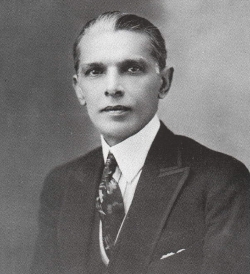 Nations are not born without the efforts of a few great men, who steer the people seeking freedom to their ultimate destiny through relentless efforts, far sightedness, vision and selflessness. The Indian subcontinent has seen may rulers, dynasties, religions and civilizations ruling it from time to time. But the conquest of Sind by the Muslims in 711 AD by the Arabs, however, has had a far greater impact on the history and the future of the sub-continent than ever before. The conversion of local mainly Hindu population to Islam and over 10 centuries long rule by Muslim rulers in one form or the other sparked a desire in the hearts of the Muslims of the subcontinent in the early 20th century for a separate homeland where they could live by their religious aspirations without being intimidated by the Hindus of the area. This was no easy task - flinching freedom from the British and their Hindu allies. To this, rose a man to the occasion who stood to the ground and fought the two to finally get a country for the Muslims of British India. This man was no less that Muhammad Ali Jinnah, revered as "Quaid e Azam" (the leader of the people) - he was a great constitutionalist, a distinguished parliamentarian, a seasoned politician, an indefatigable freedom-fighter, a dynamic Muslim leader, a political strategist and, above all one of the great nation-builder of modern times. From the very look of him, he was a thin, lean and fragile, but from within, he was a man of guts, courage, conviction and resolve.
Nations are not born without the efforts of a few great men, who steer the people seeking freedom to their ultimate destiny through relentless efforts, far sightedness, vision and selflessness. The Indian subcontinent has seen may rulers, dynasties, religions and civilizations ruling it from time to time. But the conquest of Sind by the Muslims in 711 AD by the Arabs, however, has had a far greater impact on the history and the future of the sub-continent than ever before. The conversion of local mainly Hindu population to Islam and over 10 centuries long rule by Muslim rulers in one form or the other sparked a desire in the hearts of the Muslims of the subcontinent in the early 20th century for a separate homeland where they could live by their religious aspirations without being intimidated by the Hindus of the area. This was no easy task - flinching freedom from the British and their Hindu allies. To this, rose a man to the occasion who stood to the ground and fought the two to finally get a country for the Muslims of British India. This man was no less that Muhammad Ali Jinnah, revered as "Quaid e Azam" (the leader of the people) - he was a great constitutionalist, a distinguished parliamentarian, a seasoned politician, an indefatigable freedom-fighter, a dynamic Muslim leader, a political strategist and, above all one of the great nation-builder of modern times. From the very look of him, he was a thin, lean and fragile, but from within, he was a man of guts, courage, conviction and resolve.
All through his parliamentary career, which spanned some four decades, he was probably the most powerful voice in the cause of Indian freedom and Indian rights. From Indian National Congress to Muslim League, Jinnah advocated the cause of freedom - from India to Pakistan. Once on the platform of the Muslim League Muhammad Ali Jinnah provided political leadership to the Indian Muslims and gave them expression and direction to attain their legitimate aspirations. Through his articulate expression and in-depth knowledge of the sufferings of the Muslims at the hands of the British and the Hindus, he succeeded in convincing them about the legitimacy of the Muslims' demands. This is his story.
 Early Life and Education Muhammad Ali Jinnah was born on December 25, 1876 to Mr Jinnah Ali Poonja, a prominent businessman in Karachi. He had his early schooling at the famous Sindh Madrassat-ul-Islam and the Christian Mission School. Jinnah lost his father in 1901 when he was 25 years and thereafter looked after the family affairs as well as becoming lifetime guardian of his sister, Fatima. For his higher education and professional pursuits, Jinnah chose Law and got admission in the Lincoln's Inn in 1893 and become the youngest Indian to be called to the Bar at Law. Through sheer hard work and determination, Jinnah rose to prominence and became Bombay's most successful lawyer.
Early Life and Education Muhammad Ali Jinnah was born on December 25, 1876 to Mr Jinnah Ali Poonja, a prominent businessman in Karachi. He had his early schooling at the famous Sindh Madrassat-ul-Islam and the Christian Mission School. Jinnah lost his father in 1901 when he was 25 years and thereafter looked after the family affairs as well as becoming lifetime guardian of his sister, Fatima. For his higher education and professional pursuits, Jinnah chose Law and got admission in the Lincoln's Inn in 1893 and become the youngest Indian to be called to the Bar at Law. Through sheer hard work and determination, Jinnah rose to prominence and became Bombay's most successful lawyer.
Jinnah and Politics Having obtained prominence in his profession, Jinnah entered politics in 1905 from the platform of the Indian National Congress. It was the same time that Muslim League was also founded by Sir Agha Khan in 1906, but Jinnah was to join the League much later. He went to England in that year along with Gopal Krishna Gokhale (1866-1915), as a member of a Congress delegation to plead the cause of Indian self-government during the British elections. In January 1910, he was elected to the newly-constituted Imperial Legislative Council. Mr. Montagu (1879-1924), Secretary of State for India, considered Jinnah "perfect mannered, impressive-looking, armed to the teeth with dialectics..."Jinnah, he felt, "is a very clever man, and it is, of course, an outrage that such a man should have no chance of running the affairs of his own country."
Jinnah had always advocated the cause of Hindu Muslim unity and while still member of the Congress, he joined All India Muslim League in 1913 to become a bridge between the two major communities of India. This bridge resulted into the signing of famous Congress - Muslim League Pact of 1916, known popularly as Lucknow Pact - the only pact ever signed between the two political parties. The Lucknow Pact conceded Muslims the right to separate electorate, reservation of seats in the legislatures and weight-age in representation both at the Centre and the minority provinces. It also meant that henceforth All-India Muslim League will be the representative platform for the Muslims. And to Jinnah goes the credit for all this and Jinnah came to be recognized among both Hindus and Muslims as one of India's most outstanding political leaders.
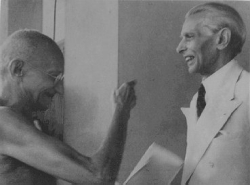 However, while being proponent of Hindu-Muslim unity, Jinnah rejected the injection of violence into politics and Gandhi's Satyagrah (civil disobedience) which meant boycott of government-aided schools and colleges, courts and councils and British textiles. Jinnah felt that Gandhi's doctrine of non-cooperation will lead to despair and resentment. He felt that there was no short-cut to independence and that Gandhi's extra-constitutional methods could only lead to lawlessness and chaos, without bringing India nearer to the threshold of freedom. Therefore Jinnah left the Congress in 1919 to devote himself fully to the cause of the Muslims and the Muslim League.
However, while being proponent of Hindu-Muslim unity, Jinnah rejected the injection of violence into politics and Gandhi's Satyagrah (civil disobedience) which meant boycott of government-aided schools and colleges, courts and councils and British textiles. Jinnah felt that Gandhi's doctrine of non-cooperation will lead to despair and resentment. He felt that there was no short-cut to independence and that Gandhi's extra-constitutional methods could only lead to lawlessness and chaos, without bringing India nearer to the threshold of freedom. Therefore Jinnah left the Congress in 1919 to devote himself fully to the cause of the Muslims and the Muslim League.
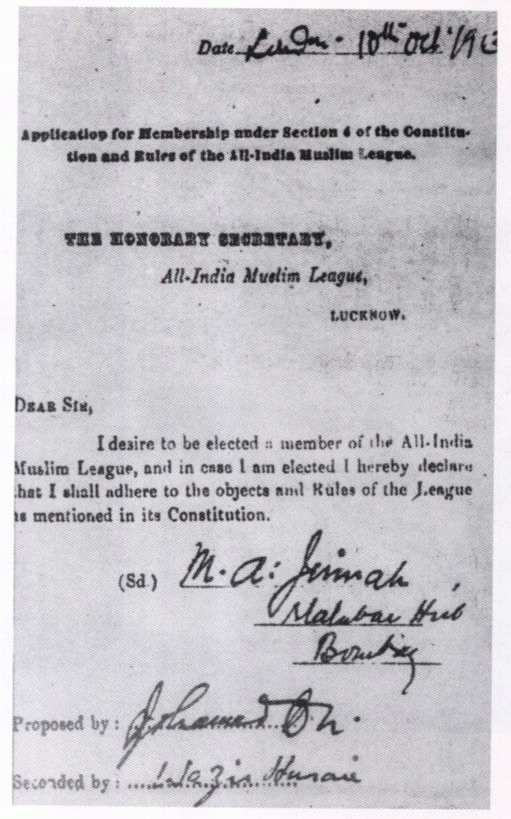
Jinnah and Muslim League In the 20s, deep distrust between the two communities started to brew and Indian National Congress refused to accept the genuine demands of the Muslims, when the somersaulted in the 1928 Nehru Report, which refused to accept the Muslim right to separate electorate, recognized earlier in the Lucknow Pact. The Nehru's Report's blank refusal to accept Muslim demands meant "the parting of the ways". Jinnah's disillusionment at the course of politics in the subcontinent prompted him to settle down in London in the early thirties. In 1934, Dr Allama Muhammad Iqbal persuaded him to come back assume the leadership of the Muslims. At that time, however, the Muslim League was ill-organized with no deep rooted representation, nor did the central body had any coherent policy of its own till the Bombay session (1936), which Jinnah organized. Jinnah devoted himself with singleness of purpose to organizing the Muslims on one platform and embarked upon country-wide tours. He pleaded with provincial Muslim leaders to sink their differences and make common cause with the League.
The first presence of Muslim was felt when it won a modest 108 (about 23 per cent) seats out of a total of 485 Muslim seats in the various legislatures in 1935. Though not very impressive victory, the League won the largest number of Muslim seats and surfaced as the only all-India party of the Muslims in the country. Thus, the elections represented the first milestone on the long road to putting Muslim India on the map of the subcontinent. However, the Congress, the dominant party in Indian politics, came to power in seven provinces exclusively, spurning the League's offer of cooperation. In that year, the Muslim League, under Jinnah's dynamic leadership, was reorganized and transformed into a mass organization, and made the spokesman of Indian Muslims as never before. The Congress provincial governments then embarked upon a policy in which Muslims felt that their religion, language and culture were not safe. This blatantly aggressive Congress policy was seized upon by Jinnah to awaken the Muslims to a new consciousness, organize them on all-India platform, and make them a power to be reckoned with. From now, the words of Jinnah became the voice of every Muslim of the subcontinent, "We are a nation - with our own distinctive culture and civilization, language and literature, art and architecture, names and nomenclature, sense of values and proportion, legal laws and moral code, customs and calendar, history and tradition, aptitudes and ambitions; in short, we have our own distinctive outlook on life and of life. By all canons of international law, we are a nation".
Demand for Pakistan The 1930 session of Muslim League, in which Dr Allama Muhammad Iqbal presented the idea of a separate homeland for the Muslims of India laid the foundation of Pakistan. In 1934, a Cambridge student Rehmat Ali coined the word "Pakistan". This idea was finally refined and presented in the 23 March 1940 Lahore session of the Muslim League. From now on all out efforts were to be made to attain Pakistan at all costs. The demand, however, was totally rejected by Gandhi since it shattered his pseudo-Indian approach. Not only the Hindu reaction was quick and bitter, malicious, the British also became hostile to the Muslim demand. However, Jinnah was undeterred and it was his powerful advocacy of the case of Pakistan and his remarkable strategy in the delicate negotiations, that followed the formulation of the Pakistan demand, particularly in the post-war period, that made the demand for Pakistan inevitable.
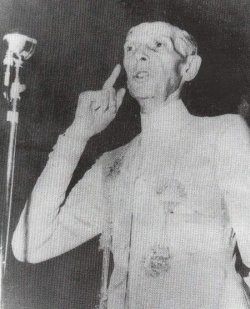
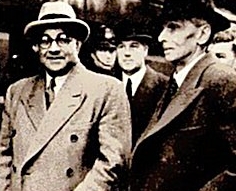
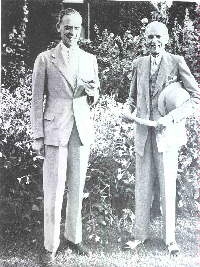
Realizing the dissatisfaction growing among the Muslims, the British initiated a number of steps to appease the growing demand for a separate Muslim homeland. Cripps Mission in April, 1942 was first such effort, which conceded the principle of self-determination to provinces on a territorial basis, but was rejected by Jinnah since it did not talk of separate homeland for the Muslims. In 1944, Gandhi tried to persuade Jinnah to abandon his demand and presented the Congress alternative to Pakistan. But Jinnah again turned it down since it still meant Muslims serving as a minority under the dominant Hindus. Cabinet Mission in 1946 was finally came to the conclusion that the central issue in Indian politics was Pakistan.
Cabinet Mission Plan stipulated a limited centre, with foreign affairs, defence and communications and three autonomous groups of provinces - two groups of Muslim majority in the north-west and the north-east of the subcontinent, while the third one, comprising the Indian mainland, to have a Hindu majority. Jinnah interpreted the clauses as cue for the foundation of Pakistan and induced the Muslim League Council to accept the Plan in June 1946; much to the dismay of the Congress. This resulted into Hindus rising against the Muslims which led to a wave of communal riots all over he subcontinent. The two peoples, it seemed, were engaged in a fight to the finish. Realizing the gravity of the situation, the British government sent a new Viceroy, Lord Mountbatten. His protracted negotiations with the various political leaders resulted in his 3 June 1947 Partition Plan by which the British agreed to partition of the subcontinent, and hand over power to two successor States on 15 August, 1947. This was the triumph of the unified effort of all Muslims of the India, led by Muhammad Ali Jinnah, whom Muslims rightly started to address as the Quaid-e-Azam (the great leader).
A rare video of Jinnah by BBC
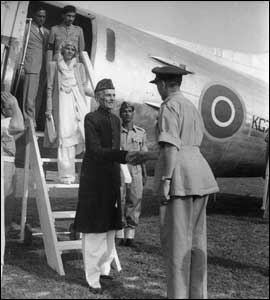 Jinnah's Pakistan: Thus on night 14-15 August 1947, Pakistan was carved out of the British India as an independent sovereign country to serve the aspirations of 700 million Muslims that opted to be part of it. As was expected, the Hindus did every thing to deny the very existence to this newly born state and choked its share of cash balance. Soon, India militarily annexed Junagadh and Hyderabad Daccen (which had originally acceded to Pakistan) and later Kashmir. On top of all this, some eight million refugees poured into Pakistan which needed to be sheltered and fed. Under such precarious circumstances with empty kitty, it was nothing short of a miracle that Pakistan survived, mainly due to Allah's help and dynamic leadership of none other than Mohammad Ali Jinnah. Jinnah laid down the policies of the new state, directed the members of the Constituent Assembly, the civil servants and the Armed Forces what to do and ensured that law and order was maintained at all costs, despite the provocation that the large-scale riots in north India had provided. He moved from Karachi to Lahore to personally supervise the rehabilitation of the countless refugee. Despite his poor health, he remained calm and composed, while directing people and officials to concentrate on helping the refugees, to avoid retaliation, exercise restraint and protect the minorities.
Jinnah's Pakistan: Thus on night 14-15 August 1947, Pakistan was carved out of the British India as an independent sovereign country to serve the aspirations of 700 million Muslims that opted to be part of it. As was expected, the Hindus did every thing to deny the very existence to this newly born state and choked its share of cash balance. Soon, India militarily annexed Junagadh and Hyderabad Daccen (which had originally acceded to Pakistan) and later Kashmir. On top of all this, some eight million refugees poured into Pakistan which needed to be sheltered and fed. Under such precarious circumstances with empty kitty, it was nothing short of a miracle that Pakistan survived, mainly due to Allah's help and dynamic leadership of none other than Mohammad Ali Jinnah. Jinnah laid down the policies of the new state, directed the members of the Constituent Assembly, the civil servants and the Armed Forces what to do and ensured that law and order was maintained at all costs, despite the provocation that the large-scale riots in north India had provided. He moved from Karachi to Lahore to personally supervise the rehabilitation of the countless refugee. Despite his poor health, he remained calm and composed, while directing people and officials to concentrate on helping the refugees, to avoid retaliation, exercise restraint and protect the minorities.
He assured the minorities of a fair deal, assuaged their inured sentiments, and gave them hope and comfort. He toured the various provinces, attended to their particular problems and instilled in the people a sense of belonging. He secured the accession of number of independent States, and entered into negotiations with Lord Mountbatten for the settlement of the Kashmir Issue. However, the life did not side with him much longer and finally he left the mourning nation for his heavenly abode on 11 September 1948.
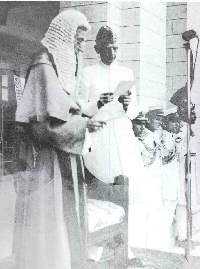
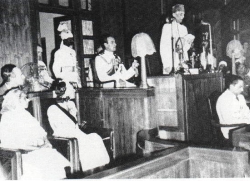

(Left to Right) - Oath as first Governor General of Pakistan - Addresses to firsts session of Constituent Assembly -First coins issued by State Bank of Pakistan
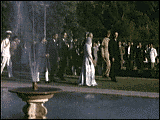
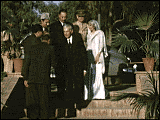
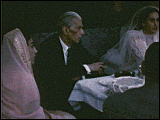
Rare Coloured Photographs of Jinnah's visit to Lahore in 1948 and Reception by Citizens of Lahore in Shalamar Gardens
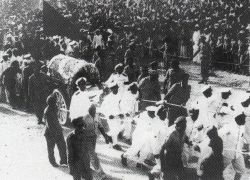
The Last Voyage - Jinnah left the one year old nation mourning on 11 September 1948
|
|
| "Mr. Jinnah was great as a lawyer, once great as a Congressman, great as a leader of Muslims, great as a world politician and diplomat, and greatest of all as a man of action, By Mr. Jinnah's passing away, the world has lost one of the greatest statesmen and Pakistan its life-giver, philosopher and guide". --------------------------------------------------------- Surat Chandra Bose, leader of the Forward Bloc wing of the Indian National Congress |
| Jaswant Singh writes in his book " Jinnah: India – Partition – Independence"…He (Jinnah) created something out of nothing and single-handedly stood against the might of the Congress and the British who didn't really like him...Gandhi himself called Jinnah a great Indian. Why don't we recognise that? Why don't we see (and try to understand) why he called him that?...I admire certain aspects of his personality; his determination and the will to rise. He was a self-made man. Mahatma Gandhi was the son of a Diwan. All these (people) – Nehru and others – were born to wealth and position. Jinnah created for himself a position. He carved in Bombay a position for himself. He was so poor that he had to walk to work…He told one of his biographers that there was always room at the top but no lift…and he never sought a lift". Jaswant Singh goes on to say that the Indian leaders had not only misunderstood Jinnah but made a demon out of him. According to him the demonisation of Jinnah was a direct result of the trauma of partition. Singh also said that the view held by many in India that Jinnah hated Hindus was a mistake. |
Dr Sir Allama Muhammad Iqbal
(the Poet Philosopher)
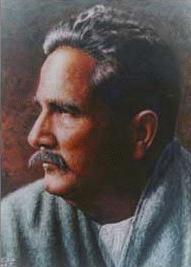 The creation of a separate independent Muslim state out of the British India is greatly indebted to none other than Dr Sir Allama Muhammad Iqbal, who was the first person to give out the idea of creation of Pakistan and then persuaded Muhammad Ali Jinnah to leave the All India Congress, join All India Muslim League and lead the Muslim struggle towards the final destination - PAKISTAN. For this alone, he is commonly known as "Mufakkar-e-Pakistan", the Thinker of Pakistan and "Hakeem-ul-Ummat" ("The Sage of Ummah"). However, Iqbal did not live to see the creation of an independent Pakistan as he passed away in 1938, but perhaps much contended to have stirred up the movement for independence. For his vision and support to the creation of Pakistan, he is considered to be the "spiritual father" of Pakistan.
The creation of a separate independent Muslim state out of the British India is greatly indebted to none other than Dr Sir Allama Muhammad Iqbal, who was the first person to give out the idea of creation of Pakistan and then persuaded Muhammad Ali Jinnah to leave the All India Congress, join All India Muslim League and lead the Muslim struggle towards the final destination - PAKISTAN. For this alone, he is commonly known as "Mufakkar-e-Pakistan", the Thinker of Pakistan and "Hakeem-ul-Ummat" ("The Sage of Ummah"). However, Iqbal did not live to see the creation of an independent Pakistan as he passed away in 1938, but perhaps much contended to have stirred up the movement for independence. For his vision and support to the creation of Pakistan, he is considered to be the "spiritual father" of Pakistan.
He was born at Sialkot (present Pakistan) on Friday, November 9, 1877 of a pious family of small merchants and was educated at Scotch Mission College, Sialkot and later he did his graduation in Arabic and Philosophy from the famous Government College, Lahore and was awarded Jamaluddin Gold Medal for securing highest marks in Arabic, and another Gold Medal in English. Later he did is masters in philosophy from the Government College, Lahore, securing first rank in Punjab state and awarded Gold Medal. As Assistant Professor, Government College, Lahore he published his first book, "Ilm-ul-Iqtasad" (study of economics) in 1903. He then went to Europe from 1905 to 1908 to earn a degree in philosophy from the University of Cambridge, qualified as a barrister in London, and received a doctorate from the University of Munich. His thesis, The Development of Metaphysics in Persia, revealed some aspects of Islamic mysticism formerly unknown in Europe. From 1907 to 1908 he was Professor of Arabic at the University of London. In 1908 he returned to India as a Ph D and Bar at Law and started his practice as a barrister and a part-time professor of Philosophy and English Literature.
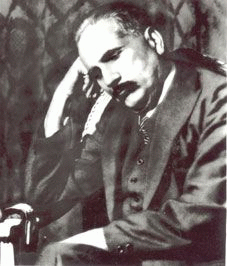 Iqbal as a Poet Philosopher: Allama Muhammad Iqbal is generally known as a poet and philosopher, besides being a jurist, a politician, a social reformer, and a great Islamic scholar. His poetry that imbued within the Muslims of India a deep sense of unity and and an urge to break away the yoke of slavery from their British masters and Hindu collaborators. To honour him for his vision and his unique poetry, he is also referred to as "Shaere-Mashriq" (Poet of the East!). People normally mistake by comparing Iqbal with Ghalib and other western poets. But poets like Shakespeare and Ghalib never wrote poetry with a purpose. They had no theory of life and their poetry reflects humanistic intimations, but like Dante and Milton, Iqbal set before an ideal of combining poetry with doctrine. He took it upon himself to inspire the Muslims to consolidate themselves in order to imbibe the true spirit of Islam. This is not to deny the greatness of his poetry, which, at times, transcends national frontiers and embraces universal human values. However, Iqbal never considered himself as a poet, "I have never considered myself a poet. Therefore, I am not a rival of anyone, and I do not consider anybody my rival. I have no interest in poetic artistry. But, yes, I have a special goal in mind for whose expression I use the medium of poetry considering the condition and the customs of this country." Iqbal's contribution to the Muslim world as one of the greatest thinkers of Islam remains unparalleled. In his writings, he addressed and exhorted people, particularly the youth, to stand up and boldly face life's challenges. The central theme and main source of his message was the Qur'an. His poetry and philosophy, written in Urdu and Persian, stress the rebirth of Islamic and spiritual redemption through self-development, moral integrity, and individual freedom. His many works include "The Secrets of the Self"; a long poem; "A Message from the East" and "The Reconstruction of Religious Thought in Islam".
Iqbal as a Poet Philosopher: Allama Muhammad Iqbal is generally known as a poet and philosopher, besides being a jurist, a politician, a social reformer, and a great Islamic scholar. His poetry that imbued within the Muslims of India a deep sense of unity and and an urge to break away the yoke of slavery from their British masters and Hindu collaborators. To honour him for his vision and his unique poetry, he is also referred to as "Shaere-Mashriq" (Poet of the East!). People normally mistake by comparing Iqbal with Ghalib and other western poets. But poets like Shakespeare and Ghalib never wrote poetry with a purpose. They had no theory of life and their poetry reflects humanistic intimations, but like Dante and Milton, Iqbal set before an ideal of combining poetry with doctrine. He took it upon himself to inspire the Muslims to consolidate themselves in order to imbibe the true spirit of Islam. This is not to deny the greatness of his poetry, which, at times, transcends national frontiers and embraces universal human values. However, Iqbal never considered himself as a poet, "I have never considered myself a poet. Therefore, I am not a rival of anyone, and I do not consider anybody my rival. I have no interest in poetic artistry. But, yes, I have a special goal in mind for whose expression I use the medium of poetry considering the condition and the customs of this country." Iqbal's contribution to the Muslim world as one of the greatest thinkers of Islam remains unparalleled. In his writings, he addressed and exhorted people, particularly the youth, to stand up and boldly face life's challenges. The central theme and main source of his message was the Qur'an. His poetry and philosophy, written in Urdu and Persian, stress the rebirth of Islamic and spiritual redemption through self-development, moral integrity, and individual freedom. His many works include "The Secrets of the Self"; a long poem; "A Message from the East" and "The Reconstruction of Religious Thought in Islam".




 A number of compilation of Allama Iqbal's soul inspiring poetry were published during his lifetime, which are still hot favourites among his devout. In 1900, Iqbal for the first time read his poem "Nala-e-Yateem," (Wails of an Orphan) at the annual function of Anjuman-e-Himayat-e-Islam at Lahore. In 1911 came the classic and most controversial poem "Shikwa" (Complaint) at Lahore, written in Persian since he addressed his appeal to the entire Muslim world. In this work Iqbal puts forth his theory of the self, a strong condemnation of the self-negating quietism (i.e., the belief that perfection and spiritual peace are attained by passive absorption in contemplation of God and divine things) of classical Islamic mysticism; his criticism shocked many and excited controversy. Iqbal and his admirers steadily maintained that creative self-affirmation is a fundamental Muslim virtue; his critics said he imposed themes from the German philosopher Friedrich Nietzsche on Islam. This was followed by the epoch-making "Jawab-e-Shikwa" (Reply to Complaint) in 1912. In 1915, his long Persian poem "Asrar-e-Khudi" (Secrets of Self) was published, followed by counterpart to "Asrar-e-Khudi", published "Rumuz-e-Bekhudi" (Mysteries of Selflessness) in Persian in 1918. In response to Goethe's West-Ostlicher Divan, Iqbal wrote "Pay am-e-Mashriq" (The Message of the East) in Persian. His famous "Bang-e-Dra" ("The Call of the Bell") was published in 1924. In 1927 Zabur-e 'Ajam ("Persian Psalms") appeared, in which Iqbal displayed an altogether extraordinary talent for the most delicate and delightful of all Persian styles, the ghazal," or love poem. Came 1931, when a collection of his six lectures in the form of "Reconstruction of Religious Thought in Islam," was published. In 1932, "Javed Namah" was printed in Persian, which is considered to be in reply to Dante's 'Divine Comedy'. His famous collection "Bal-e-Jibril" in Urdu was published in 1934 and "Zarab-e-Kalim" in 1936, followed by "Pas Che Bayad Kard" in Persian, and "Payam-e-Mashriq" in September 1936. In most of his work, Iqbal gave intense expression to the anguish of Muslim powerlessness.
A number of compilation of Allama Iqbal's soul inspiring poetry were published during his lifetime, which are still hot favourites among his devout. In 1900, Iqbal for the first time read his poem "Nala-e-Yateem," (Wails of an Orphan) at the annual function of Anjuman-e-Himayat-e-Islam at Lahore. In 1911 came the classic and most controversial poem "Shikwa" (Complaint) at Lahore, written in Persian since he addressed his appeal to the entire Muslim world. In this work Iqbal puts forth his theory of the self, a strong condemnation of the self-negating quietism (i.e., the belief that perfection and spiritual peace are attained by passive absorption in contemplation of God and divine things) of classical Islamic mysticism; his criticism shocked many and excited controversy. Iqbal and his admirers steadily maintained that creative self-affirmation is a fundamental Muslim virtue; his critics said he imposed themes from the German philosopher Friedrich Nietzsche on Islam. This was followed by the epoch-making "Jawab-e-Shikwa" (Reply to Complaint) in 1912. In 1915, his long Persian poem "Asrar-e-Khudi" (Secrets of Self) was published, followed by counterpart to "Asrar-e-Khudi", published "Rumuz-e-Bekhudi" (Mysteries of Selflessness) in Persian in 1918. In response to Goethe's West-Ostlicher Divan, Iqbal wrote "Pay am-e-Mashriq" (The Message of the East) in Persian. His famous "Bang-e-Dra" ("The Call of the Bell") was published in 1924. In 1927 Zabur-e 'Ajam ("Persian Psalms") appeared, in which Iqbal displayed an altogether extraordinary talent for the most delicate and delightful of all Persian styles, the ghazal," or love poem. Came 1931, when a collection of his six lectures in the form of "Reconstruction of Religious Thought in Islam," was published. In 1932, "Javed Namah" was printed in Persian, which is considered to be in reply to Dante's 'Divine Comedy'. His famous collection "Bal-e-Jibril" in Urdu was published in 1934 and "Zarab-e-Kalim" in 1936, followed by "Pas Che Bayad Kard" in Persian, and "Payam-e-Mashriq" in September 1936. In most of his work, Iqbal gave intense expression to the anguish of Muslim powerlessness.
Narration/English subtitles of famous poem by Iqbal "Shikwah" (left) - Ramooz-e-Khudi (right)
Iqbal's Concept of Self ("Khdi"): The central theme of Iqbal's poetry revolves around the elevation of the "self" and addresses the Muslims to improve their spiritual being rather than the bodily and worldly needs. This concept is based on the basic tenants of Islam wherein to know Allah is to know oneself.


The two verses quoted above very finely and plainly explain the dividends of elevation of "self". Those who chose to offer prayers with no consequent effects on their lives and dealings with others, says Iqbal, have in fact not prayed at all. One needs to elevate himself to a level that Allah Himself ask the person as to what he needs. If we look around we would find that the human being's material needs and wants are of more immediate and pressing concern to him which overshadow and overwhelm his spiritual needs. The concern for his material existence results in his forsaking his "self", synonymous with forsaking Allah. This leads the human being to mistakenly regard his material existence as his true self and become oblivious to his real self - his "self". Iqbal received a knighthood from the British Government in honour of the "Asrar-i-Khudi" (The Secrets of the Self) at Lahore on January 1, 1923.
Iqbal due to his love for the Persin language and his many works in Persian is respected and loved in Iran and referred to as "Eghbale Lahori (Iqbal of Lahore)". Herein under is a Persian poetry of Iqbal "az Zaboor-e-ajam"
Iqbal's poetry initially revolved around Indian nationalism. But his visit to Europe and sufferings of the Muslims made him to change his perspective and he started to criticize nationalism and opined that nationalism in Europe had led to destructive racism and imperialism, and in India it was not founded on an adequate degree of common purpose. Now his poetry and speeches were full of the concept of pan-Islamism, a speech at Aligarh in 1910, under the title "Islam as a Social and Political Ideal," clearly indicated to his new concepts and perspective. Iqbal called for the unity and reform, which could only be achieved by strengthening the individual through obedience to the law of Islam, self-control, and acceptance of the idea that everyone is potentially a vicegerent of Allah.
Iqbal contended that the Muslim community must encourage the ideals of brotherhood and justice. The mystery of selflessness was the hidden strength of Islam. Ultimately, the only satisfactory mode of active self-realization was the sacrifice of the self in the service of causes greater than the self. The paradigm was the life of the Prophet Muhammad and the devoted service of the first believers. What an irony, that the lamentations of Iqbal still stand true today as the Muslim community remains as undivided and oblivious to the sufferings of the brother Muslims as it was in years of Iqbal.
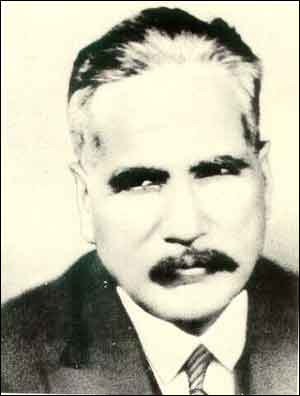 Iqbal as a Politician and Supporter of Muslim Resurgence: The sufferings of the Muslims, specially in the Balkans, after the World War I, the end of the Ottoman Empire and slipping of ground under the Muslims' feet, specially the sufferings of the Muslims of the Indian sub-continent and the unjust attitude towards them from the British and Hindus compelled Iqbal to enter the politics and was elected to the Punjab provincial legislature in 1927. He became the president of the all India Muslim League in 1930 and right away started its reconstruction and orientation towards the plight of the Muslims. Initially a supporter of Hindu-Muslim unity in a single Indian state, Iqbal later became an advocate of Pakistani independence. In addition to his political activism, Iqbal was considered the foremost Muslim thinker of his day. In 1930, Iqbal was invited to preside over the open session of the Muslim League at Allahabad. In his historic Allahabad Address, Iqbal visualized an independent and sovereign state for the Muslims of North-Western India. He said, "I would like to see the Punjab, North-West Frontier Province, Sind and Balochistan amalgamated into a single State. Self-government within the British Empire, or without the British Empire, the formation of a consolidated North-West Indian Muslim State appears to me to be the final destiny of the Muslims, at least of North-West India."
Iqbal as a Politician and Supporter of Muslim Resurgence: The sufferings of the Muslims, specially in the Balkans, after the World War I, the end of the Ottoman Empire and slipping of ground under the Muslims' feet, specially the sufferings of the Muslims of the Indian sub-continent and the unjust attitude towards them from the British and Hindus compelled Iqbal to enter the politics and was elected to the Punjab provincial legislature in 1927. He became the president of the all India Muslim League in 1930 and right away started its reconstruction and orientation towards the plight of the Muslims. Initially a supporter of Hindu-Muslim unity in a single Indian state, Iqbal later became an advocate of Pakistani independence. In addition to his political activism, Iqbal was considered the foremost Muslim thinker of his day. In 1930, Iqbal was invited to preside over the open session of the Muslim League at Allahabad. In his historic Allahabad Address, Iqbal visualized an independent and sovereign state for the Muslims of North-Western India. He said, "I would like to see the Punjab, North-West Frontier Province, Sind and Balochistan amalgamated into a single State. Self-government within the British Empire, or without the British Empire, the formation of a consolidated North-West Indian Muslim State appears to me to be the final destiny of the Muslims, at least of North-West India."
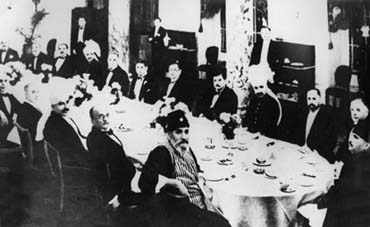 In 1932, Iqbal headed a Muslim delegate to England to attend the Third Round Table Conference. While in London, Iqbal was invited by the London National League where he addressed prominent scholars and politicians, foreign diplomats, members of the House of Commons, Members of the House of Lords and Muslim members of the R.T.C. delegation. He very forcefully put across the Muslim view point and their plight back home. He explained why he wanted the communal settlement first and then the constitutional reforms. He stressed the need for provincial autonomy because autonomy gave the Muslim majority provinces some power to safeguard their rights, cultural traditions and religion. Under the central Government the Muslims were bound to lose their cultural and religious entity at the hands of the overwhelming Hindu majority. He referred to what he had said at Allahabad in 1930 and reiterated his belief that before long people were bound to come round to his viewpoint based on cogent reason.
In 1932, Iqbal headed a Muslim delegate to England to attend the Third Round Table Conference. While in London, Iqbal was invited by the London National League where he addressed prominent scholars and politicians, foreign diplomats, members of the House of Commons, Members of the House of Lords and Muslim members of the R.T.C. delegation. He very forcefully put across the Muslim view point and their plight back home. He explained why he wanted the communal settlement first and then the constitutional reforms. He stressed the need for provincial autonomy because autonomy gave the Muslim majority provinces some power to safeguard their rights, cultural traditions and religion. Under the central Government the Muslims were bound to lose their cultural and religious entity at the hands of the overwhelming Hindu majority. He referred to what he had said at Allahabad in 1930 and reiterated his belief that before long people were bound to come round to his viewpoint based on cogent reason.
During these days, 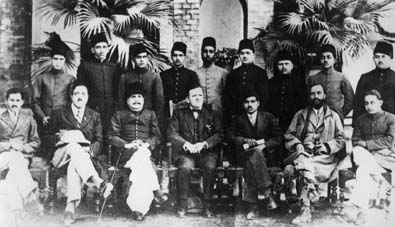 Jinnah was residing in London. Sensing the leadership qualities of Jinnah, Iqbal thought of none other than Jinnah to come forth and lead the Muslims' struggle. In fact, Iqbal preferred Jinnah to other more experienced Muslim leaders such as Sir Aga Khan, Maulana Shaukat Ali, Nawab Hamid Ullah Khan of Bhopal, Sir Ali Imam, Abul Kalam, and others. Iqbal wrote to Jinnah conveying to him his personal views on political problems and state of affairs of the Indian Muslims, and also persuading him to come back. He wrote, "I know you are a busy man but I do hope you would not mind my writing to you often, as you are the only Muslim in India today to whom the community has right to look up for safe guidance through the storm which is coming to North-West India, and perhaps to the whole of India." Iqbal was of the view, "There is only one way out. Muslim should strengthen Jinnah's hands. They should join the Muslim League. Indian question, as is now being solved, can be countered by our united front against both the Hindus and the English. Without it our demands are not going to be accepted. People say our demands smack of communalism. This is sheer propaganda. These demands relate to the defence of our national existence. ... The united front can be formed under the leadership of the Muslim League. And the Muslim League can succeed only on account of Jinnah. Now none but Jinnah is capable of leading the Muslims."
Jinnah was residing in London. Sensing the leadership qualities of Jinnah, Iqbal thought of none other than Jinnah to come forth and lead the Muslims' struggle. In fact, Iqbal preferred Jinnah to other more experienced Muslim leaders such as Sir Aga Khan, Maulana Shaukat Ali, Nawab Hamid Ullah Khan of Bhopal, Sir Ali Imam, Abul Kalam, and others. Iqbal wrote to Jinnah conveying to him his personal views on political problems and state of affairs of the Indian Muslims, and also persuading him to come back. He wrote, "I know you are a busy man but I do hope you would not mind my writing to you often, as you are the only Muslim in India today to whom the community has right to look up for safe guidance through the storm which is coming to North-West India, and perhaps to the whole of India." Iqbal was of the view, "There is only one way out. Muslim should strengthen Jinnah's hands. They should join the Muslim League. Indian question, as is now being solved, can be countered by our united front against both the Hindus and the English. Without it our demands are not going to be accepted. People say our demands smack of communalism. This is sheer propaganda. These demands relate to the defence of our national existence. ... The united front can be formed under the leadership of the Muslim League. And the Muslim League can succeed only on account of Jinnah. Now none but Jinnah is capable of leading the Muslims."
The following events were to prove how right Iqbal was in his vision to have selected Jinnah to lead the Muslims as Jinnah articulated the case of a separate homeland for Pakistan so brilliantly, that even the Hindus and the British could not stand in his way and had to succumb to his demands and gave way for the creation of Pakistan.
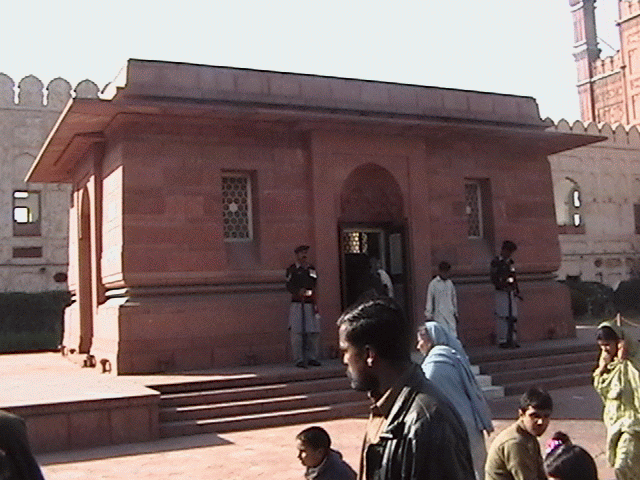
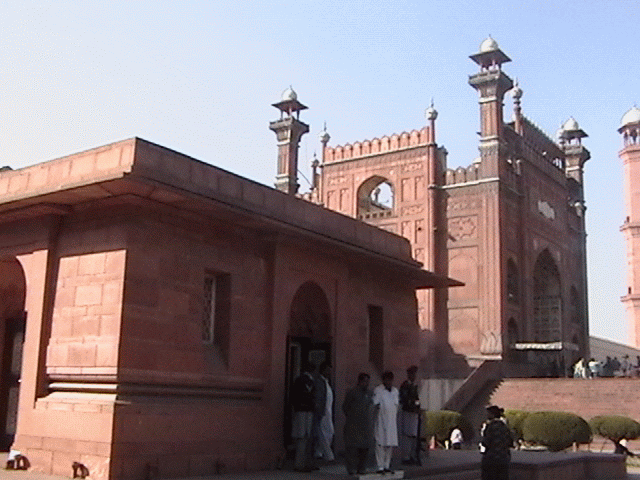
A land thought of by none other than Iqbal, whom his life never allowed him to breathe the fragrance of independence. Just nine years before the independence, Iqbal breathed his last on April 21, 1938. In order to commend his services for the Muslims, he was buried in Lahore next to the Badshahi Mosque, so that all those coming for prayers could also pray for this great soul.
Prof. Dr. Annemarie Schimmel on Allama Muhammad Iqbal
Annemarie Schimmel, SI, HI, (April 7, 1922 – January 26, 2003) was a well known and very influential German Orientalist and scholar who wrote extensively on Islam and Sufism. She published more than 100 books on Islamic literature, mysticism and culture, and translated Persian, Urdu, Arabic, Sindhi and Turkish poetry and literature into English and German. In Pakistan, she is remembered and revered for her life long research on the life and poetry of Iqbal. Her interest in Iqbal studies dated back to her student days. To quote her, "my long lasting love of Iqbal (which began when I was a student in Berlin during the war) has led me to publish a number of works which are more or less relevant for a study of his contribution to Muslim thought…… . In many articles I have tried to show Iqbal in the context of Islamic modernism, or deal with his imagery". Ever since the appearance of her first article on Iqbal (1954) she had been writing on Iqbal in various languages and on different aspects of his thought and art. But her book Gabriel's Wing– A Study into the Religious Ideas of Sir Muhammad Iqbal (1963, rpt. 1989) is still the finest specimen of her erudition and insight in Iqbal studies and Islamic thought in general. This is testified by the fact that from among a large number of books written in the major languages of the world, Gabriel's Wing was declared as the best work on Iqbal studies, in the international languages, for the period 1947-1981. Apart from these works she was the author of hundreds of articles and dozens of books on Iqbal and Islam. She also funded the Annemarie Schimmel scholarship for Women Studies in Pakistan. The Government of Pakistan decorated her with the highest of civil awards, "Tamgha i Imtiyaz".
Bird Watching in Pakistan
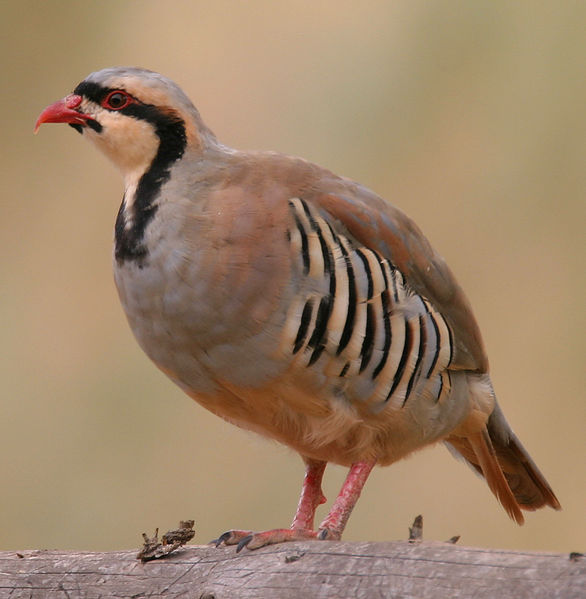
Chakur (Partridge) - National Bird of Pakistan
The Chukar (Alectoris chukar) is a Eurasian upland game bird in the pheasant family Phasianidae of the order Galliformes, gallinaceous birds. Its native range in Asia from Pakistan and Kashmir, India and Afghanistan. It is closely related and similar to its western equivalent, the Red-legged Partridge, Alectoris rufa. The Chukar is a rotund 32-35 cm long bird, with a light brown back, grey breast, and buff belly. The face is white with a black gorget. It has rufous-streaked flanks and red legs. When disturbed, it prefers to run rather than fly, but if necessary it flies a short distance on rounded wings. Chukar prefer rocky, steep, and open hillsides. The Chukar is a resident breeder in dry, open, and often hilly country. In the wild, Chukar travel in groups of 5-40 birds called coveys. It nests in a scantily lined ground scrape laying 8 to 20 eggs. Chukars will take a wide variety of seeds and some insects as food. When in captivity, they will lay 1 egg per day throughout the breeding season if the eggs are collected daily. For hunters, Chakur is a very challneging bird becuase of its surgical upward flights and sudden disappearances in the bushes.
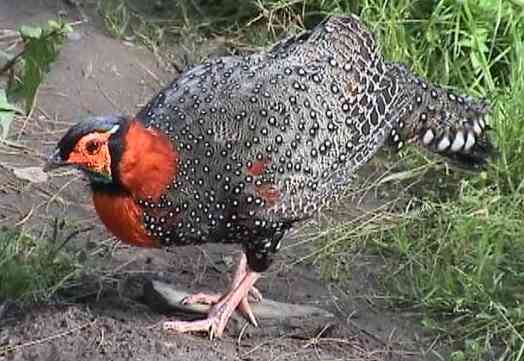
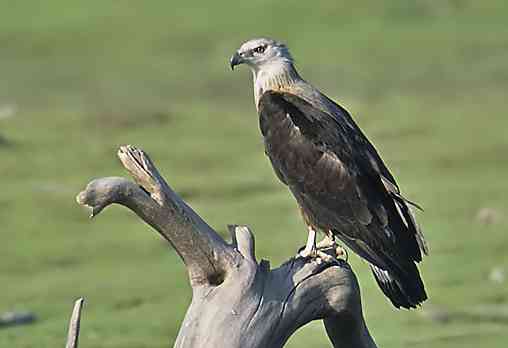
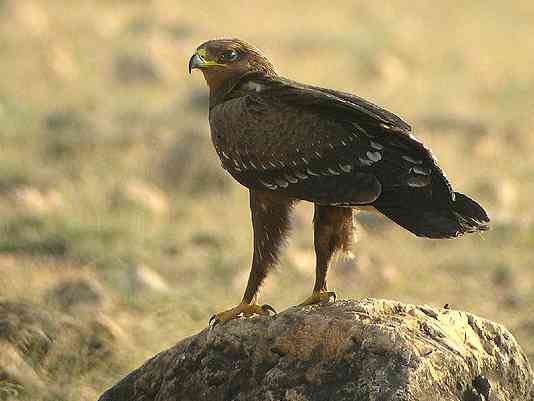
Western Tragopan pheasant - Pallas's Fish-eagle - Greater Spotted Eagle
Pakistan, due to its diverse weather and varied land is home to some of the rare and exclusive birds in the world. Its wetlands and lakes attract millions of migratory birds from across the globe, specially Siberia each year, which besides its own native birds in their natural habitat in the jungles and mountains, provide an excellent opportunity to the bird watchers around the world. Western Tragopan pheasant (Tragopan melanocephalus) is one of the rare species that exists in the northerly mountains and the Macharia National Park, where it is being bred and chances are that this beautiful bird will be able to be saved of its near extinction in Pakistan.
Some of the bird sanctuaries and wild life habitats in Pakistan are as under:-
-
Ayubia National Park: This park provides refuge to the elusive leopard and the black bear along with excellent birding.
-
Chitral Gol National Park: The park is the home of the elusive snow leopard and some interesting birds.
-
Deosai National Park: Birds in the park include Golden eagle, Lammagier Vulture, Griffon Vulture, Laggar falcon, Peregrine Falcon, Kestrel, Indian Sparrow Hawk and Snow cock.
-
Drigh Lake: The lake is an important breeding and wintering area for a wide variety of water birds.
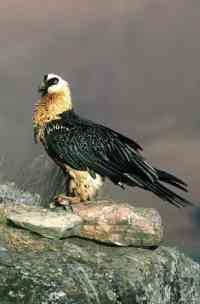
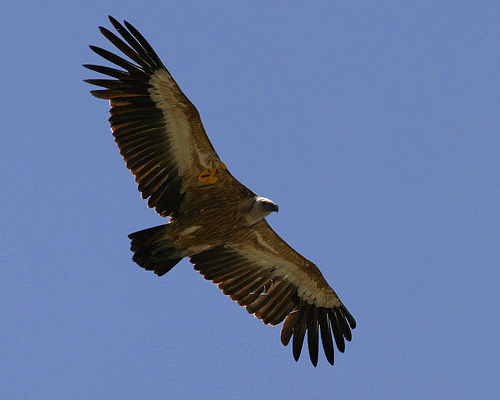
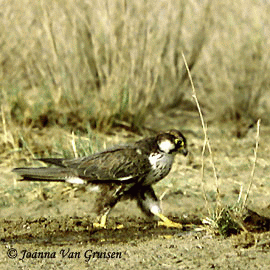
Lammagier Vulture - Griffon Vulture - Laggar falcon - Kestrel
-
Haleji Lake: Asia's greatest water fowl reserve, Haleji Lake is 70 km (about 52 miles) from Karachi. During winter, a hundred thousand birds fly down to Haleji from the cold of Siberia. It is a bird watchers' paradise. Between Bhanbhore and Thatta, if you turn into the countrylane by the 82km (51/1 mile-furlong stone) a 6-km long drive will bring you to the largest bird sanctuary of the country, Haleji Lake. During the winter, migatory birds come to this lake in very large numbers to the great delight of the bird watchers. You can drive along the 16 km. (10 miles) track around the lake for photography or bird watching.
-
Hazar Ganji Chiltan National Park: In the folds of these mountains, many species of birds make their homes.
-
Hingol National Park: Dalmatian Pelican (Pelecanus crispus)
-
Indus Dolphin Reserve and Kandhkot Wetland: The vast Indus Basin wetland include Common Teal (Anas crecca), Marbled Teal (Marmaronetta angustirostris), Great Egret (Casmerodius albus),Dalmatian Pelican (Pelecanus crispus), Little Cormorant (Phalacrocorax niger), Pallas's Fish-eagle (Haliaeetus leucoryphus), Greater Spotted Eagle (Aquila clanga), Imperial Eagle (Aquila heliaca), Black-tailed Godwit (Limosa limosa), Spotted Redshank (Tringa erythropus), Little Stint (Calidris minuta), Small Pratincole (Glareola lactea), River Tern (Sterna aurantia), Indian Skimmer (Rynchops albicollis), Pale-backed Pigeon (Columba eversmanni).
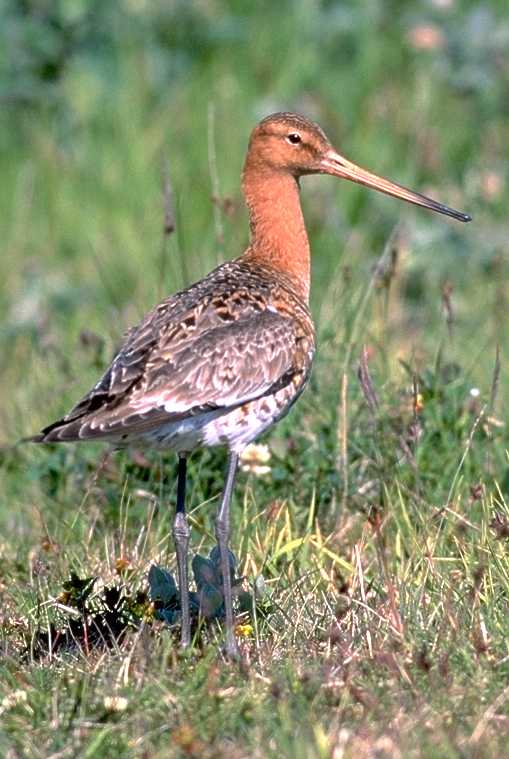
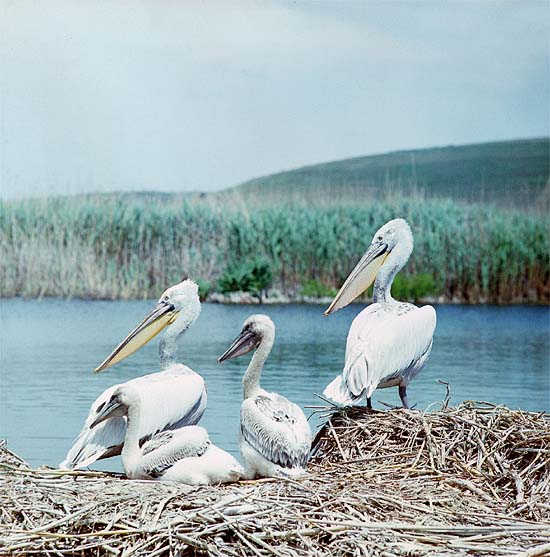
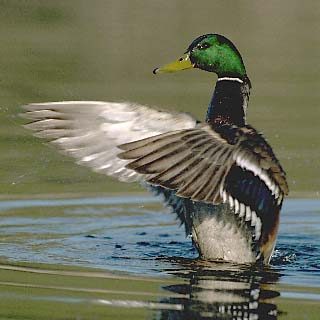
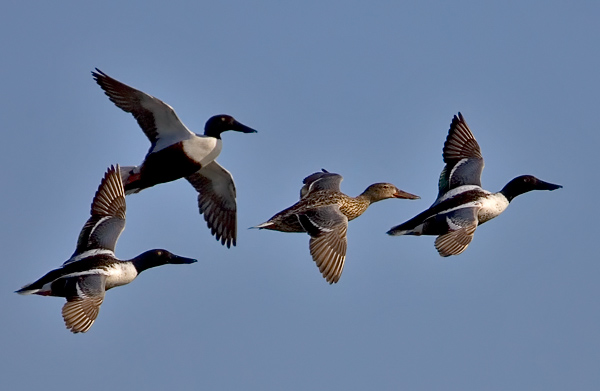
Black-tailed Godwit - Dalmatian Pelican - Mallard - Northern-Shoveler
-
Kinjhar (Kalri) Lake: The largest freshwater lake in Pakistan with extensive reedbeds.
-
Kirthar National Park: The park is home to some rare species of mammals as well as a great variety of birds.
-
Keti Bundar North Wildlife Sanctuary: Marbled Teal (Marmaronetta angustirostris), Dalmatian Pelican (Pelecanus crispus), Greater Spotted Eagle (Aquila clanga), Imperial Eagle (Aquila heliaca), Indian Skimmer (Rynchops albicollis)
-
Khabbaki Lake: The lake is important as a staging and wintering area for a wide variety of water birds.
-
Kheshki Reservoir: A small storage reservoir, originally created to supply local villages with water, now popular with birds.
-
Khunjerab National Park: Watch for birds as the hills move back from the road, the valley opens out and the river dwindles to a tiny mountain stream with the odd tuft of grass, willow or birch along its banks
-
Kandar Dam: A tiny water storage reservoir (at maximum capacity its area is only 47ha) set in stony hills to the west of the Indus river.
-
Lal Suhanra National Park: The park is actually a wildlife sanctuary and features watch towers and tourist huts. Mallard (Anas platyrhynchos), Northern Shoveler (Anas clypeata), Pallas's Fish-eagle (Haliaeetus leucoryphus), Greater Spotted Eagle (Aquila clanga) and Imperial Eagle (Aquila heliaca) are some of the birds that can be seen here.
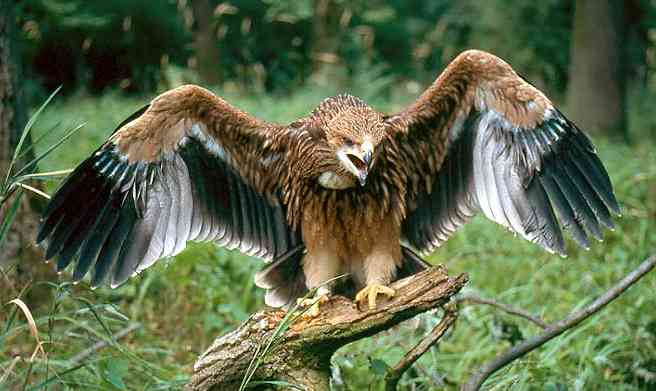
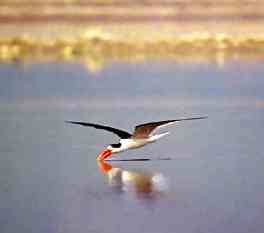
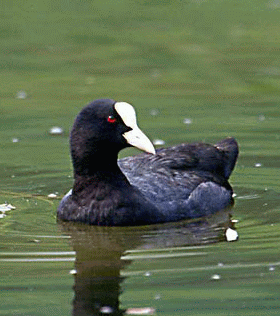
Imperial Eagle - Indian Skimmer - Common Coot
-
Machiara National Park: Located in the Azad kashmir, this park of special significance since here rare breeds of pheasants, specially the Western Tragopan pheasant (Tragopan melanocephalus) is bred and efforts are at hand to save this beautiful bird from extinction.
-
Malugul Dhand: A shallow, brackish lake formed by seasonal flooding of a "dead arm" of the Kurram river.
-
Mangla Lake: Mallard (Anas platyrhynchos), Common Teal (Anas crecca), Marbled Teal (Marmaronetta angustirostris), Common Pochard (Aythya ferina) and Tufted Duck (Aythya fuligula) are some of the birds that flock the vast blue waters of Mangla Dam Lake.
-
Marala Game Reserve: Mallard (Anas platyrhynchos) and Common Teal (Anas crecca) can be seen here.
-
Margalla Hills National Park: Park provides an excellent opportunity for bird watching.
-
Naran Reserve Forest to Saif-ul-Maluk Lake: The clear blue water of the lake, surrounded by snoa covered "Malka Parbat" mountain attract White-cheeked Tit (Aegithalos leucogenys), Brooks's Leaf-warbler (Phylloscopus subviridis), Spectacled Finch (Callacanthis burtoni) and Orange Bullfinch (Pyrrhula aurantiaca) each year. Nothing could be more awe inspiring than watching birds at 12,000 feet.
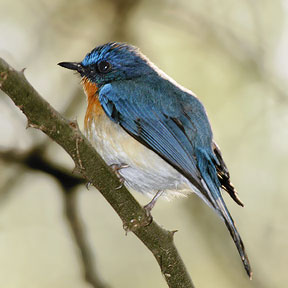
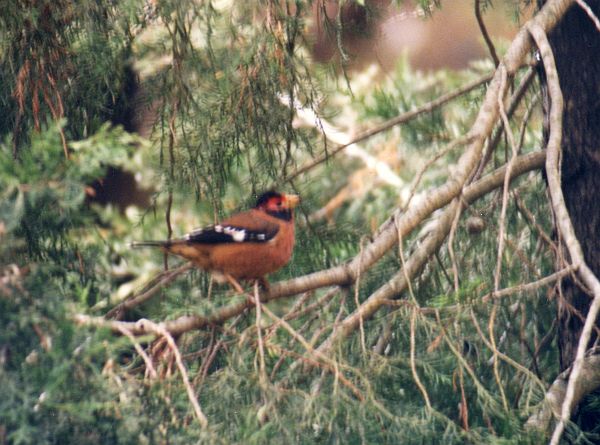
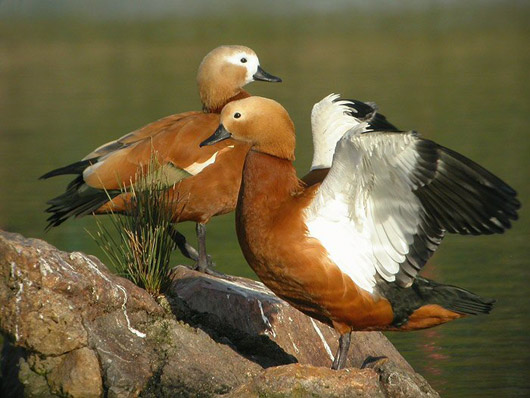
Brooks's Leaf-warbler - Spectacled Finch - Ruddy Shelduck
-
Palas Valley: The temperate forest in this high valley supports around 325 pairs of the very rare and beautiful Western Tragopan, along with a number of other west Himalayan specialties.
-
Rann of Kutch Wildlife Sanctuary: The endless marshes of Rann of Kutch on the border of India and Sind Province of Pakistan are home to Ruddy Shelduck (Tadorna ferruginea), Common Shelduck (Tadorna tadorna), Eurasian Wigeon (Anas penelope), Northern Shoveler (Anas clypeata), Northern Pintail (Anas acuta), Common Teal (Anas crecca), Greater Flamingo (Phoenicopterus roseus), Indian Vulture (Gyps indicus), Sarus Crane (Grus antigone), Common Crane (Grus grus), Pied Avocet (Recurvirostra avosetta), Kentish Plover (Charadrius alexandrinus), Little Stint (Calidris minuta) and Ruff (Philomachus pugnax).
-
Rasool Barrage Wildlife Sanctuary: Northern Pintail (Anas acuta), Common Teal (Anas crecca), Common Pochard (Aythya ferina) and Common Coot (Fulica atra) can be watched from the sanctuary, besides resting on the bank of River Chenab and watching the Rasool Barrage.
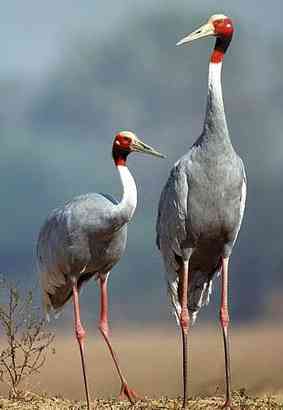
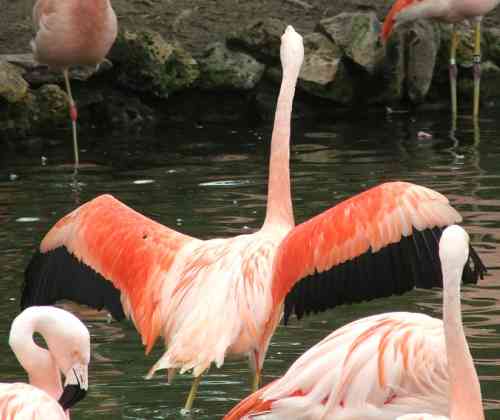
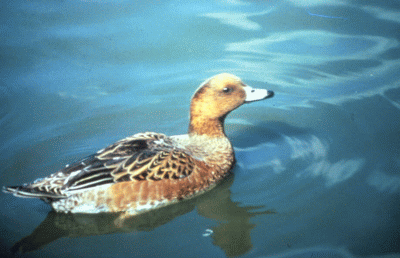
Northern Pintail - Sarus Crane - Greater Flamingo -Eurasian Wigeon
-
Tanda Dam: The site is of national importance as a wintering and staging area for a wide variety of water birds.
-
Thanedar Wala: Most of the area consists of a complex of braided river channels and sandy or muddy islands.
-
Ucchali Wetland Complex: Located in the Salt Ranges, the Ucchali Wetland is home to a number of migratory birds like Marbled Teal (Marmaronetta angustirostris), White-headed Duck (Oxyura leucocephala), Eurasian Spoonbill (Platalea leucorodia), Dalmatian Pelican (Pelecanus crispus), Pallas's Fish-eagle (Haliaeetus leucoryphus), White-rumped Vulture (Gyps bengalensis), Imperial Eagle (Aquila heliaca) and Common Coot (Fulica atra).
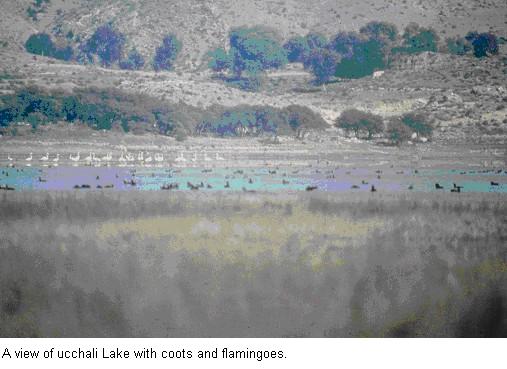
Fauna and Endangered Wildlife of Pakistan
Markhor - National Animal of Pakistan
| The Markhor (Capra Falconeri Falconeri) mainly inhabits the sparsely wooded mountainous regions in Northern and Western Pakistan, at an elevation of 600-3,600 m / 1,900-11,500 ft. The total world population is mainly found in Pakistan. Today, Markhor are present in around 20 of Pakistan's protected areas. In the northern mountainous regions is found the Kashmir and Astor Markhor. The Kashmir Markhor (C. f. cashmirensis ) is mainly confined to Chitral Gol National Park and presents the biggest population in Pakistan. Poaching has been successfully controlled and now there are over 500 Markhor in Chitral Gol National Park. The Kashmir Markhor is also found in areas of Gilgit and Azad Kashmir. The Astor Markhor (C. f. falconeri) is mainly confined to the higher hill ranges of Gilgit, Hunza and Nanga Parbat. The only good population is in the Kargah Nullah and Naltar, near Gilgit. The Kargah Nullah might have a total population of 50 Markhors. Current population estimates are less than 2,500 to 3,000 for the flared horned markhor in Pakistan. Read more about Markor at Wikipedia |
 Although not as rich as the African continent, but many rare and endangered species are also found in Pakistan. Generally the wild animals in Pakistan include various varieties of deer, wild boar, bear, crocodile, rare snow leopards (left) and waterfowl. The wetlands and lakes provide natural habitat for a number of including coated otter, Indus dolphin, fishing cat, hog deer, and wild boar. During the migration season, at least 1 million waterfowl representing more than 100 species visit the extensive deltas and wetlands of Pakistan. Pakistan’s rivers and coastal waters contain many types of freshwater and saltwater fish, including sharks, mackerel, herring and shellfish.
Although not as rich as the African continent, but many rare and endangered species are also found in Pakistan. Generally the wild animals in Pakistan include various varieties of deer, wild boar, bear, crocodile, rare snow leopards (left) and waterfowl. The wetlands and lakes provide natural habitat for a number of including coated otter, Indus dolphin, fishing cat, hog deer, and wild boar. During the migration season, at least 1 million waterfowl representing more than 100 species visit the extensive deltas and wetlands of Pakistan. Pakistan’s rivers and coastal waters contain many types of freshwater and saltwater fish, including sharks, mackerel, herring and shellfish.
Mammals
Of the 4,100 mammal species in the world, Pakistan is home to only 188, including 25 hoofed animals. While Pakistan abounds in various types of antelopes, deer, jackal and foxes, brown and black bears and Snow Leopards (left) are disappearing due to expansion of villages and small towns. The "Urial" (below left) with its rounded horns is an often sight in the hills and mountains of Pothohar Plateau and northern areas. Frequently hunted, their number is also decreasing gradually. Other mammals include the Markhor, Himalayan or Siberian Ibex (below 2nd from left), Sind Wild Goat (third from left), Chiltan Wild Goat (below center), Marco Polo Sheep, Bharal or Blue Sheep, Goral Sheep (below right). The Cholistan desert in the province of Punjab contains some of the rare wildlife in Pakistan, like the Desert Wolf, Indian fox, Red fox, Jackal, Small Indian civet, Indian grey mongoose, Indian desert cat, Jungle cat, Caracal cat, Chinkara gazelle, Blackbuck and Nil-gai antelope.
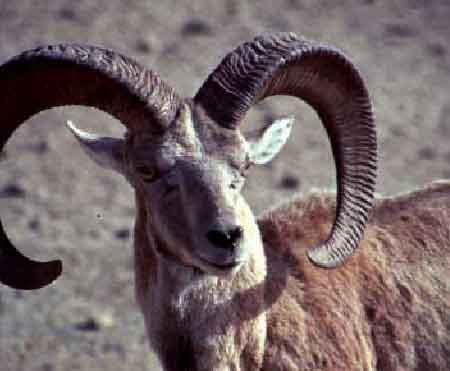
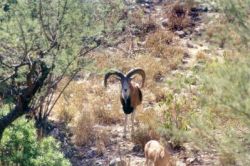
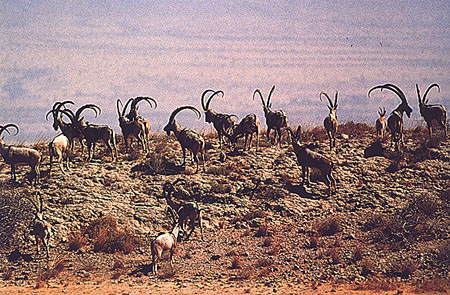
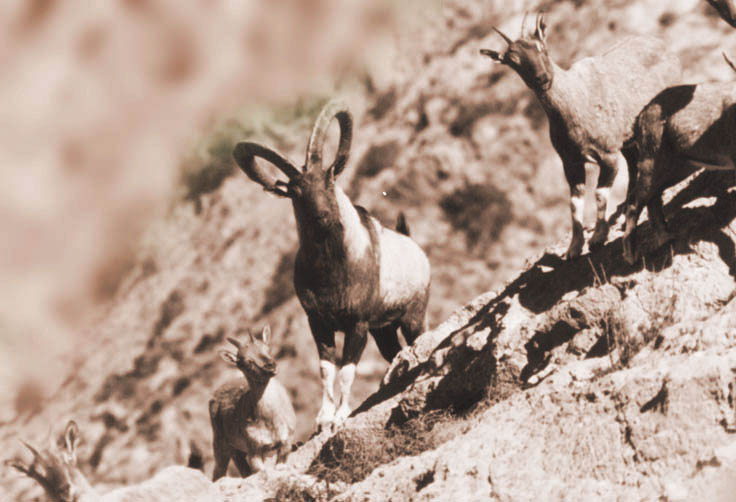
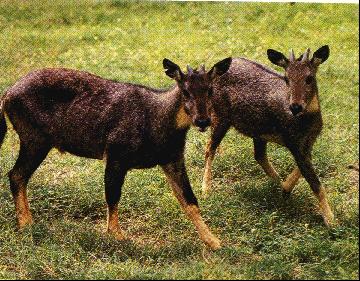
In view of the decreasing wild life, the government has short listed six parks for their development. These include Lal Sohanra National Park (Bahawalpur - Punjab), Kirthar National Park (Sindh), Khunjerab National Park (Northern Areas), Chiltan Hazarganji, National Park (Balochistan), Margalla Hills National Park (Islamabad) and Chitral Gol National Park (NWFP). In addition, Pakistan has 14 National Parks, 99 Wildlife Sanctuaries, and 96 Game Reserves. Kirthar National Park has the distinction of being the first park on the UN list of Protected areas. The Lalsuhanra Park in Punjab is listed as a Biosphere Reserve under UNESCO’s Man and Biosphere Programme. Similarly, 9 wetlands in the country are protected under the International Convention on Wetlands. The Hazarganji National Park in Balochistan is managed by the WWF and contains a population of the Chilton markhor, not found anywhere else. The marshy Runn of Kutch Wildlife Sanctuary also has Wild Ass, Blue bull, Chinkara and Desert wolf. Once the only population of the Indian Wild Ass or Onager wass found here - but not anymore as they are thought to have been exterminated. The beautiful "Nil-gai" is also occasionally found here. The Naltar Wildlife Sanctuary has been able to contain a small population of Astor Markhor. The surrounding hills of Hub Dam Wildlife Sanctuary is home of Urial, Sind wild goat, Chinkara gazelle, Wolf, Jackal, Common fox, Pangolin and numerous other birds and reptiles. Read More
| |
|

Pakistan has recently 3 wild life wildlife sanctuaries in Sindh Province spread over 1 million hectares. These include Deh Akro-II Desert Wetland Complex, Indus Delta and Runn of Kutch. Read More
Fish and Marine Life: Pakistan has approximately 200 freshwater fish species. The South Asian species dominate the fish fauna in Pakistan, while some West Asian species are also found. About 8-10 species of Snow Trout are found in the rivers of the northern mountains and provide a spectacular view during their against the current journey in ice cold water. The major source of fish in Pakistan is the Indus River plains, Kirthar range and the Himalayan foothills. The famous fish species include "Rahoo, Singhara, Malli" and others. More than a 1000 species inhabit Pakistani coastal waters. The fish fauna can be divided into two groups, the cartilaginous and bony fishes. Cartilaginous fish include sharks, skates and rays and their skeleton is made of cartilage. Bony fish have hard bony skeletons.
In addition to fish, some 700 marine species of invertebrates include crab, shrimp and prawn and another 300 species of shellfish. Both categories of species are of significant economic importance to Pakistan.
| Endangered Species: Some of the threatened or endangered species in Pakistan include the snow leopard, Marco Polo sheep, blue sheep, ibex (a type of wild goat), the Houbura Bustard and the Indus Dolphin. These animals can still be found in remote and protected areas of the Himalayas. Similarly, Indus Dolphin is also declared as endangered species and some 400-500 number are left between the Kotri and Guddu Barrages in river Indus. The woolly flying squirrel, an endangered mammal has also been sighted once, in Gich, District Ghizer of Gilgit. The mammal is also listed in the threatened animals category. |
| | |
| | |
Flora of Pakistan
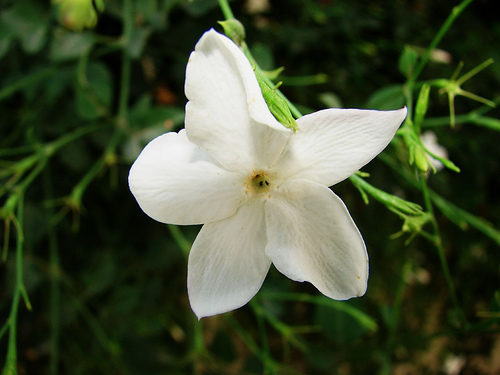
Chambeili ( Jasmine ) The National Flower of Pakistan
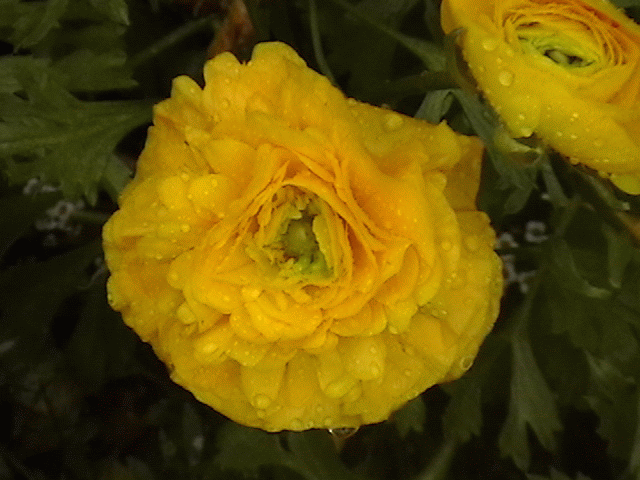 Flora and natural landscape of any country or region largely hinges on its climate, geography, closeness to sea and mountains besides soil type and precipitation. from sea shore, the altitude in Pakistan rises to 8,611 m (height of K-2, the second highest peak of the world), and temperature varies from sub-zero in the glacier-clad mountains to 52°C (125°F) at Sibi (Balochistan province) and Mianwali (Punjab). The average annual precipitation ranges from as low as .50 mm at Nok Kundi in Balochistan to 2032 mm in the northern mountain ranges. This diversity in altitude, temperature and precipitation has resulted in a diversity of biotic communities, and a relatively rich flora of at least 5,700 species of various form of plants.
Flora and natural landscape of any country or region largely hinges on its climate, geography, closeness to sea and mountains besides soil type and precipitation. from sea shore, the altitude in Pakistan rises to 8,611 m (height of K-2, the second highest peak of the world), and temperature varies from sub-zero in the glacier-clad mountains to 52°C (125°F) at Sibi (Balochistan province) and Mianwali (Punjab). The average annual precipitation ranges from as low as .50 mm at Nok Kundi in Balochistan to 2032 mm in the northern mountain ranges. This diversity in altitude, temperature and precipitation has resulted in a diversity of biotic communities, and a relatively rich flora of at least 5,700 species of various form of plants.
Generally, the forests are confined to the mountain ranges in the north, where coniferous alpine and sub-alpine trees such as spruce, pine, and deodar cedar grow. The southern ranges of the Himalayas, which are of lower elevation, receive heavy rainfall and have dense forests of deodar, pine, poplar, and willow trees. In the Bulashbar Valley, in the Northern Areas, heavy rainfall allows for a more diverse flora than in many other parts of Pakistan's north. The mountain slope below the snowline provide favourable conditions for many species of kail, fir and spruce, juniper, birch and the important chilghoza pine to thrive. The arid Sulaiman and Salt mountain ranges are sparsely forested with mulberry trees, locally called shisham. Dry-temperate vegetation in the form of coarse grasses, scrub plants and dwarf palm abound in the valleys of the North-West Frontier Province and the Balochistan Plateau. The western hills are dotted with juniper, tamarisk (salt cedar), and pistachio trees. Ziarat (Balochistan) has juniper forests that are believed to be 5,000 years old, spread over an area of 0.3 million acres. Dry-tropical scrub and thorn trees are the predominant vegetation in the Indus River plain. Known as rakh, this vegetation is native to the region and can survive temperatures higher than 45°C (113°F). Irrigated tree plantations are found in Punjab and Sind along roadsides, canals and artifical forests. Changa Manga and Lalsohanra Forests are some to mention. There are some 203 endemic species, or about 4% of the total flora, which mostly abound the mountain regions of northern Pakistan, particularly in the Chitral and Kashmir districts, and in northern Balochistan.
In addition, some 2000 medicinal plant species are found in Pakistan. Among these is Ephedra Procera, used in allopathic medicine to treat bronchial asthma, hay fever and as a heart stimulant. Once a major supply of Ephedra Procera to the world originated from Balochistan. But the exploitation of these herbal plants largely remains under explored or even neglected due to ignorance of even their presence and about 90% of herbal plants are imported for drug manufacturing. As per an estimate, 4000 tonnes of oil from juniper berries could be harvested.
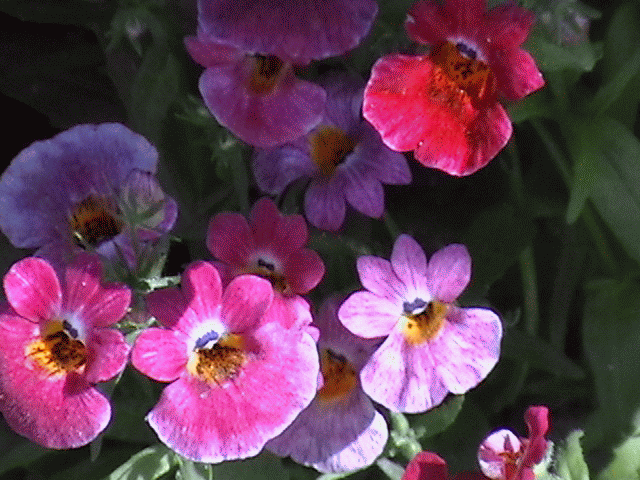
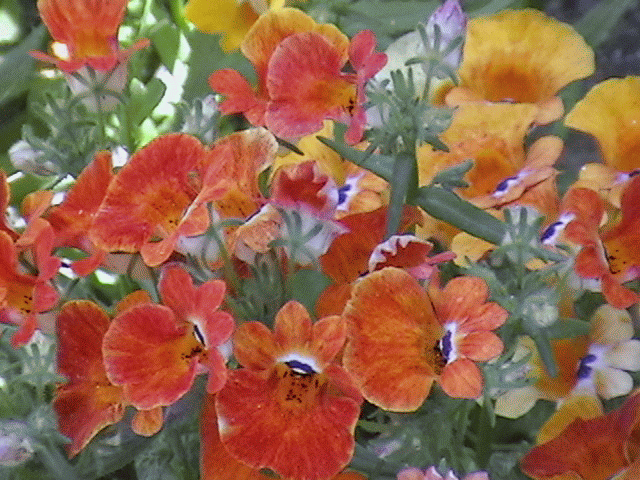
Like the wild life, some plant species (about 12% of the total) have been estimated as threatened or endangered due to lack of adequate rains in recent years, habitat destruction, over-exploitation of economic plants, introduction of alien species besides environmental pollution. No one presently seems to be interested in conserving the flora which may prove to be disastrous in long run. A case in point is the old Juniper forests in Ziarat (Balochistan) which are dwindling due to illegal deforestation.
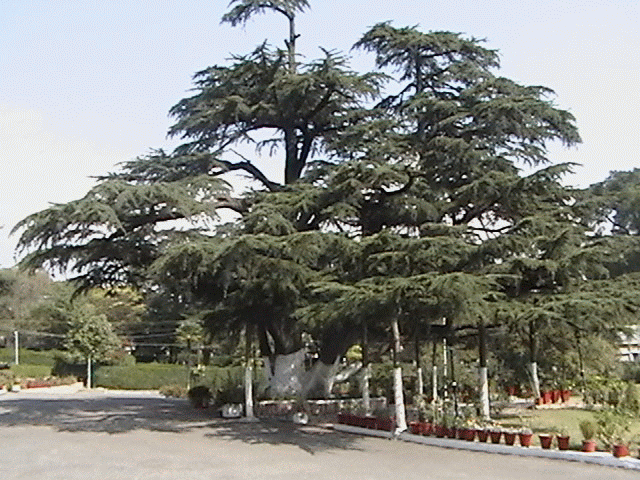 Deodar or Himalayan Cedar (Cedrus Deodara) is the National tree of Pakistan. It is a species of cedar native to the western Himalaya in eastern Afghanistan, northern Pakistan, Kashmir, Tibet and western Nepal, occurring at 1500-3200 m altitude. It is a large evergreen coniferous tree reaching 40-50 m tall, exceptionally 60 m, with a trunk up to 3 m diameter. It has a conic crown with level branches and drooping branchlets. The leaves are needle-like, mostly 2.5-5 cm long, occasionally up to 7 cm long, slender (1 mm thick), borne singly on long shoots, and in dense clusters of 20-30 on short shoots; they vary from bright green to glaucous blue-green in colour. The female cones are barrel-shaped, 7-13 cm long and 5-8 cm broad, and disintegrate when mature (in 12 months) to release the winged seeds. The male cones are 4-6 cm long, and shed their pollen in autumn. Abbotabad in Pakistan has some very rare and old trees, some even as old as 200-300 years old. The photograph shown above is that of huge tree standing majestically in the Piffers Officers' Mess in Abbottabd, planted somewhere around 1850. Deodar or Himalayan Cedar (Cedrus Deodara) is the National tree of Pakistan. It is a species of cedar native to the western Himalaya in eastern Afghanistan, northern Pakistan, Kashmir, Tibet and western Nepal, occurring at 1500-3200 m altitude. It is a large evergreen coniferous tree reaching 40-50 m tall, exceptionally 60 m, with a trunk up to 3 m diameter. It has a conic crown with level branches and drooping branchlets. The leaves are needle-like, mostly 2.5-5 cm long, occasionally up to 7 cm long, slender (1 mm thick), borne singly on long shoots, and in dense clusters of 20-30 on short shoots; they vary from bright green to glaucous blue-green in colour. The female cones are barrel-shaped, 7-13 cm long and 5-8 cm broad, and disintegrate when mature (in 12 months) to release the winged seeds. The male cones are 4-6 cm long, and shed their pollen in autumn. Abbotabad in Pakistan has some very rare and old trees, some even as old as 200-300 years old. The photograph shown above is that of huge tree standing majestically in the Piffers Officers' Mess in Abbottabd, planted somewhere around 1850. |
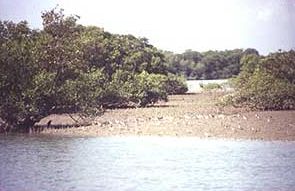 Mangrove Forests Pakistan, houses the world's 5th largest continuous mangrove area, known as the Indus delta mangrove ecosystem, stretched over some 600, 000 hectors between Karachi and the south-western border of India on the coast of Arabian Sea. Beside mangrove forests, the delta also includes creeks, extensive mud flats, sand dunes and salt marshes. An estimated 135,000 people abound the area, earning their livelihood mainly from fishing besides camel browsing, buffalo grazing and wood collection etc. The over fishing, reduction in sweet water flow through the Indus, pollution and changes in hydrography is dangerously degenerating the mangrove vegetation and habitat.
Mangrove Forests Pakistan, houses the world's 5th largest continuous mangrove area, known as the Indus delta mangrove ecosystem, stretched over some 600, 000 hectors between Karachi and the south-western border of India on the coast of Arabian Sea. Beside mangrove forests, the delta also includes creeks, extensive mud flats, sand dunes and salt marshes. An estimated 135,000 people abound the area, earning their livelihood mainly from fishing besides camel browsing, buffalo grazing and wood collection etc. The over fishing, reduction in sweet water flow through the Indus, pollution and changes in hydrography is dangerously degenerating the mangrove vegetation and habitat.
The need to conserve and rehabilitate the valuable resources of this ecosystem has resulted in formulation of the Rehabilitation and Replanting of the Indus Delta Mangroves (RRIDM) sub project in 1993. The project has succeeded in establishing about 16, 000 hectors of mangroves over a period of 6 years in Karachi, Keti Bundar/Karochan and Shah Bundar regions. Average survival rates of new plantation is around 81%.
--میرا نیا بلاگ - اپنی رائے کا اظہار کیجئے
http://shoaibtanoli.wordpress.com/
Regards
M Shoaib TaNoLi
Karachi Pakistan
Email@ shoaib.tanoli@gmail.com
Cell # +92-300-2591223
Facebook :https://www.facebook.com/mtanoli
SKYPE: shoaib.tanoli2
پاکستان زندہ باد ۔ پاکستان پائندہ باد
Long Live Pakistan
Pakistan Zindabad!
Dear Readers: My mails are my personal choice. The purpose of these mails is to establish contact with you, make you aware of different cultures ,disseminate knowledge and information. If these (mails) sound you unpleasant, please intimate .
IF YOU ARE NOT INTERESTED IN MY MAIL
PLEASE REPLY THIS E_,MAIL WITH THE SUBJECT.. UNSUBSCRIBE
E Mail: shoaib.tanoli@gmail.com
--
پاکستان کسی بھی پاکستانی کے لئے اللہ کی سب سے بڑی نعمتوں میں سے ایک ہے. آج ہم جو بھی ہے یہ سب اس وجہ پاکستان کی ہے ، دوسری صورت میں ، ہم کچھ بھی نہیں ہوتا. براہ مہربانی پاکستان کے لئے مخلص ہو.
* Group name:█▓▒░ M SHOAIB TANOLI░▒▓█
* Group home page: http://groups.google.com/group/MSHOAIBTANOLI
* Group email address MSHOAIBTANOLI@googlegroups.com
To unsubscribe from this group, send email to
MSHOAIBTANOLI+unsubscribe@googlegroups.com
*. * . * . * . * . * . * . * . * . * . *
*. * .*_/\_ *. * . * . * . * . * . * . * . * .*
.•´¸.•*´¨) ¸.•*¨) ¸.•´¸.•*´¨) ¸.•*¨)
(¸.•´ (¸.•` *
'...**,''',...LOVE PAKISTAN......
***********************************
Muhammad Shoaib Tanoli
Karachi Pakistan
Contact us: shoaib.tanoli@gmail.com
+923002591223
Group Moderator:
*Sweet Girl* Iram Saleem
iramslm@gmail.com
Face book:
https://www.facebook.com/TanoliGroups
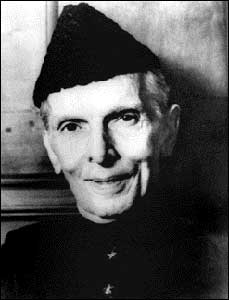
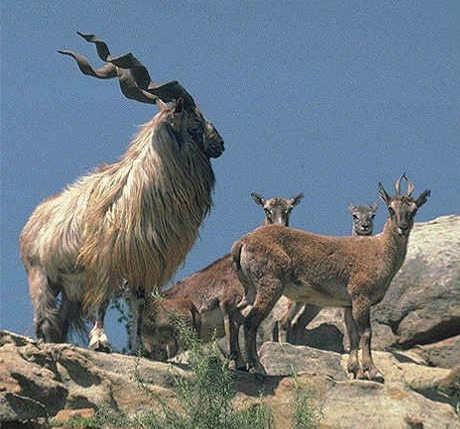
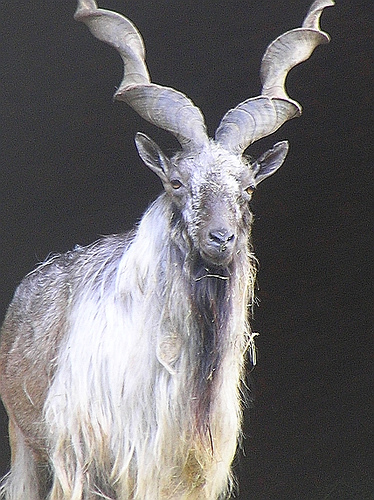
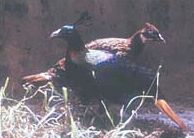 There are forty-nine species of pheasants found all over the world, of which six are found in Pakistan. These include Blue Peafowl, Kalij, Koklass, Cheer, and Western Tragopan. The Dhodial Pheasantry near Abbottabad is one of the the largest pheasantry in Asia. The Pheasantry has been proudly able to breed "Cheer" in captivity, a bird otherwise extinct in the country. In 1997 a parent flock of 40 pairs was raised, which has doubled now. The release of Cheer, for re-introduction, has also been started. This success, has given international fame to the pheasantry.
There are forty-nine species of pheasants found all over the world, of which six are found in Pakistan. These include Blue Peafowl, Kalij, Koklass, Cheer, and Western Tragopan. The Dhodial Pheasantry near Abbottabad is one of the the largest pheasantry in Asia. The Pheasantry has been proudly able to breed "Cheer" in captivity, a bird otherwise extinct in the country. In 1997 a parent flock of 40 pairs was raised, which has doubled now. The release of Cheer, for re-introduction, has also been started. This success, has given international fame to the pheasantry. 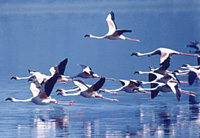 In Pakistan, an estimated population of one million birds migrates during winter. Most of them land on the wetlands along the Indus River in the Sind Province. These freshwater wetlands provide suitable habitats and feeding opportunities to a wide variety of water-birds passing through Indus flyway. Nara canal with associated marshlands in Khairpur, Drig Lake in Larkana, Haleji and Keenjhar Lakes in Thatta, are some of the favourite wintering abodes of migratory water-birds. These include many species of duck family like Mallards, Pintails, Shovelers, Teals, Wigeon, Garganeys and Shelducks etc, beside Coots, Moorhens, Gallinules, Waterhen and Grebes etc. A large population of Shorebirds also reaches in coastal area of Sindh like the Curlews, Whimbrels, Godwits, Shanks, Sandpipers, Stints and Dunlin etc. Other wading birds like Flamingoes, Pelicans, Spoonbills and Ibises can also be sighted on both upcountry wetlands and on tidal estuaries along the seashores.
In Pakistan, an estimated population of one million birds migrates during winter. Most of them land on the wetlands along the Indus River in the Sind Province. These freshwater wetlands provide suitable habitats and feeding opportunities to a wide variety of water-birds passing through Indus flyway. Nara canal with associated marshlands in Khairpur, Drig Lake in Larkana, Haleji and Keenjhar Lakes in Thatta, are some of the favourite wintering abodes of migratory water-birds. These include many species of duck family like Mallards, Pintails, Shovelers, Teals, Wigeon, Garganeys and Shelducks etc, beside Coots, Moorhens, Gallinules, Waterhen and Grebes etc. A large population of Shorebirds also reaches in coastal area of Sindh like the Curlews, Whimbrels, Godwits, Shanks, Sandpipers, Stints and Dunlin etc. Other wading birds like Flamingoes, Pelicans, Spoonbills and Ibises can also be sighted on both upcountry wetlands and on tidal estuaries along the seashores. 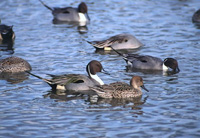 The 'Rasul Barrage Wildlife Sanctuary'. After monsoon, environs are green and this wetland is full lotus. Flocks of Siberians Cranes and Strokes and local black winged Stilts are the common winter sights in the area. Though at the dawn of a hot August day, I was able to see only few Tobas perching over their morning catch or a few flocks of Murghabis (wild ducks). The marshy Runn of Kutch and its surrounding desert area in Sindh is known to be a breeding ground for Flamingoes and staging ground for Pelicans, Cranes, Storks and many species of waterfowl.
The 'Rasul Barrage Wildlife Sanctuary'. After monsoon, environs are green and this wetland is full lotus. Flocks of Siberians Cranes and Strokes and local black winged Stilts are the common winter sights in the area. Though at the dawn of a hot August day, I was able to see only few Tobas perching over their morning catch or a few flocks of Murghabis (wild ducks). The marshy Runn of Kutch and its surrounding desert area in Sindh is known to be a breeding ground for Flamingoes and staging ground for Pelicans, Cranes, Storks and many species of waterfowl.  People in the villages are fond of having pet birds, specially the speaking parrots, black partridges and quails etc. The much famous phrase "Mian Mitho Choori Khani Hai" (asking parrot if he wants to eat a home made sweet made from local bread, sugar and butter/desi ghee) is echoed almost everywhere when someone comes across a red beaked parrot that has a red ring around its neck.
People in the villages are fond of having pet birds, specially the speaking parrots, black partridges and quails etc. The much famous phrase "Mian Mitho Choori Khani Hai" (asking parrot if he wants to eat a home made sweet made from local bread, sugar and butter/desi ghee) is echoed almost everywhere when someone comes across a red beaked parrot that has a red ring around its neck.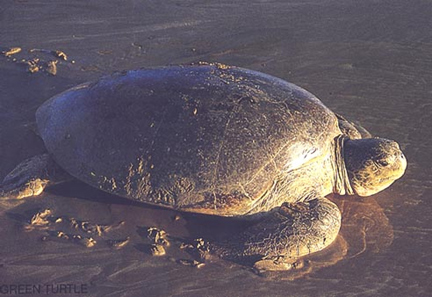 The Green Turtle is the second largest species of marine turtle family after the Leatherback turtle. It can grow up to 3.5 feet in carapace size, and could be as heavy as 180 kilogram. In Pakistan, Green Turtle nests for eggs on Sandspit and Hawksbay beaches (Karachi) throughout the year with a remarkable apex from September to January. Every year, an average of 800 nests has been observed at beaches of Karachi, besides some coastal areas of of the Balochistan province. However, the Green Turtles are facing extinction all over the world due to low growth rate and environmental constraints.
The Green Turtle is the second largest species of marine turtle family after the Leatherback turtle. It can grow up to 3.5 feet in carapace size, and could be as heavy as 180 kilogram. In Pakistan, Green Turtle nests for eggs on Sandspit and Hawksbay beaches (Karachi) throughout the year with a remarkable apex from September to January. Every year, an average of 800 nests has been observed at beaches of Karachi, besides some coastal areas of of the Balochistan province. However, the Green Turtles are facing extinction all over the world due to low growth rate and environmental constraints. 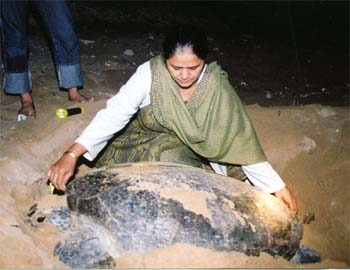 The Marine Turtle Project in Pakistan is the last hope for the survival of Green Turtles in our region. Though, the population of turtles has not been increased so far, however it has been sustained to an extent that the Green Turtle can still be seen nesting at the beaches of Karachi. If the project was not there, our next generation would have never known how the Green Turtle looked like.
The Marine Turtle Project in Pakistan is the last hope for the survival of Green Turtles in our region. Though, the population of turtles has not been increased so far, however it has been sustained to an extent that the Green Turtle can still be seen nesting at the beaches of Karachi. If the project was not there, our next generation would have never known how the Green Turtle looked like.  The "Gharial" or the crocodiles are found in lakes and marshes around Karachi. Manghoo Pir, shrine of a saint omce had many crocodiles in the pond inside the shrine, but now only a few are left. The Nara Desert Wildlife Sanctuary has the largest population of the endangered Mugger Crocodile in Pakistan, besides Jackal, Fox, Pangolin, Honey Badger and Wolf.
The "Gharial" or the crocodiles are found in lakes and marshes around Karachi. Manghoo Pir, shrine of a saint omce had many crocodiles in the pond inside the shrine, but now only a few are left. The Nara Desert Wildlife Sanctuary has the largest population of the endangered Mugger Crocodile in Pakistan, besides Jackal, Fox, Pangolin, Honey Badger and Wolf.  The the total remaining population of Snow Leopard is estimated around 7,000-10,000 worldwide, of which around 300 are found in Pakistan. Anyone who can venture up to Nagar Valley, 65 kilometres north of Gilgit, one has a fair chance of siting the big cat, preferably at dawn or dusk. The Baltistan Wildlife Sanctuary covering 415 square kilometres in Baltistan, contiguous with the Astor Wildlife Sanctuary to its south and east and south of the Indus River, is basically established to protect the Snow Leopard besides Brown Bear, Lynx, Tibetan wolf, Tibetan fox, Markhor, Blue sheep and Asiatic ibex. Recently, an animal husbandry program in Chitral has been established which combines science to provide a new approach to save snow leopards.
The the total remaining population of Snow Leopard is estimated around 7,000-10,000 worldwide, of which around 300 are found in Pakistan. Anyone who can venture up to Nagar Valley, 65 kilometres north of Gilgit, one has a fair chance of siting the big cat, preferably at dawn or dusk. The Baltistan Wildlife Sanctuary covering 415 square kilometres in Baltistan, contiguous with the Astor Wildlife Sanctuary to its south and east and south of the Indus River, is basically established to protect the Snow Leopard besides Brown Bear, Lynx, Tibetan wolf, Tibetan fox, Markhor, Blue sheep and Asiatic ibex. Recently, an animal husbandry program in Chitral has been established which combines science to provide a new approach to save snow leopards. 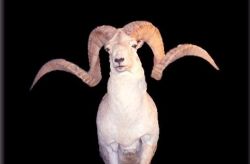 Marcopolo Sheep is recognized by the very long outward curving horns, developed in the mature males. An aged ram is is very impressive and majestic, mainly because of massive spiraling horns which can span a man's outstretched arms and almost twice the height and size of most other wild or domestic sheep. The Marco Polo sheep is an inhabitant of very high mountains subject to severely cold winds and climatic conditions throughout the year. Currently, its population is confined to northwestern part of Hunza district along the Chinese border. Here, between spring and autumn, it occupies two sperate valleys in the northwest section of Khunjerab National Park, and also inhabits the Kilik-Mintaka border area, just west of the National Park. Marco Polo sheep is probably the most endangered of Pakistan's wild sheep and goats, and unless action is taken immediately they will probably become extinct.
Marcopolo Sheep is recognized by the very long outward curving horns, developed in the mature males. An aged ram is is very impressive and majestic, mainly because of massive spiraling horns which can span a man's outstretched arms and almost twice the height and size of most other wild or domestic sheep. The Marco Polo sheep is an inhabitant of very high mountains subject to severely cold winds and climatic conditions throughout the year. Currently, its population is confined to northwestern part of Hunza district along the Chinese border. Here, between spring and autumn, it occupies two sperate valleys in the northwest section of Khunjerab National Park, and also inhabits the Kilik-Mintaka border area, just west of the National Park. Marco Polo sheep is probably the most endangered of Pakistan's wild sheep and goats, and unless action is taken immediately they will probably become extinct. 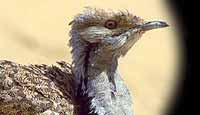 The Houbara Bustard has been over hunted as a game bird in Pakistan and is officially protected. But despite all restrictions, some royalties of the Gulf states find it convenient to come on official trips and hunt this poor bird with falcons. In the evenings, the hunted bustards are skewered and eaten - as simple as that.
The Houbara Bustard has been over hunted as a game bird in Pakistan and is officially protected. But despite all restrictions, some royalties of the Gulf states find it convenient to come on official trips and hunt this poor bird with falcons. In the evenings, the hunted bustards are skewered and eaten - as simple as that. 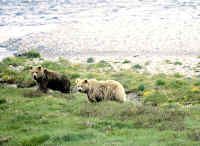 An endangered species of bear, found only in the northern areas of Pakistan, could face extinction of its already small population in a specially designated national park. The population of the Himalayan Brown Bear is a mere 30 animals, up from the 19 reported in 1993, while the official wildlife department figures are 62. The Deosai Plains are one of the habitat of this almost extinct species. The Baltistan Wildlife Sanctuary is struggling hard to conserve the Brown Bear besides Snow Leopard, Lynx, Tibetan wolf and fox, Markhor, Blue sheep and Asiatic ibex
An endangered species of bear, found only in the northern areas of Pakistan, could face extinction of its already small population in a specially designated national park. The population of the Himalayan Brown Bear is a mere 30 animals, up from the 19 reported in 1993, while the official wildlife department figures are 62. The Deosai Plains are one of the habitat of this almost extinct species. The Baltistan Wildlife Sanctuary is struggling hard to conserve the Brown Bear besides Snow Leopard, Lynx, Tibetan wolf and fox, Markhor, Blue sheep and Asiatic ibex
No comments:
Post a Comment